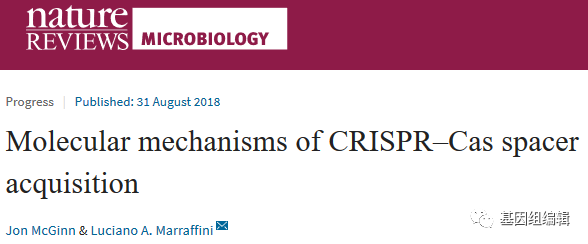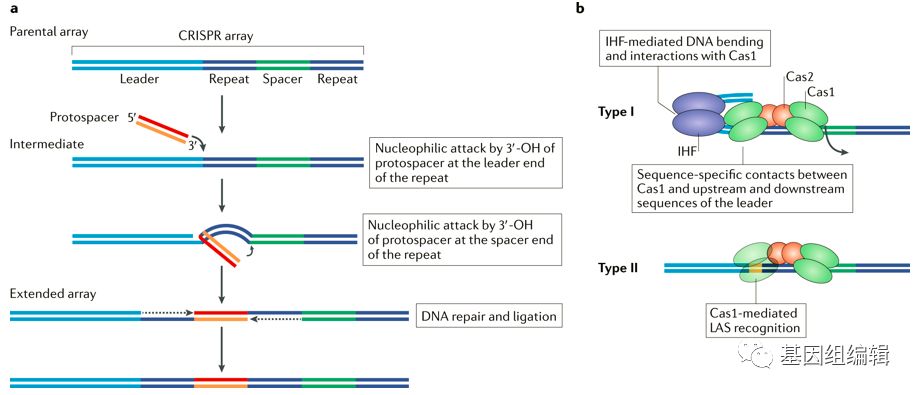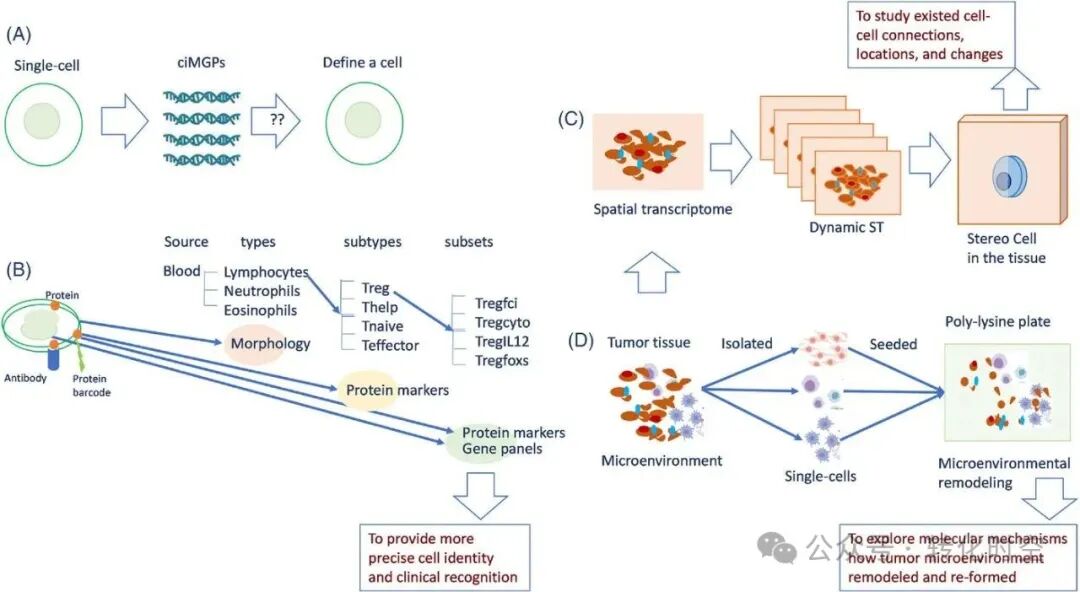Nat Rev Microbiol:CRISPR-Cas获取spacer的分子机制
| 导读 | 许多细菌和古细菌具有通过将称为间隔区(spacer)的外源DNA的小片段掺入CRISPR基因座从而改变基因组的独特能力。一旦转录并加工成单独的CRISPR RNA,该序列可引导Cas效应核酸酶破坏靶向互补的外源核酸。以上这两个过程被称为CRISPR-Cas免疫应答。 |
许多细菌和古细菌具有通过将称为间隔区(spacer)的外源DNA的小片段掺入CRISPR基因座从而改变基因组的独特能力。一旦转录并加工成单独的CRISPR RNA,该序列可引导Cas效应核酸酶破坏靶向互补的外源核酸。以上这两个过程被称为CRISPR-Cas免疫应答。

在这篇综述文章中,作者回顾了最近的研究。这些研究有助于人们对间隔物获取的分子机制进行理解,并揭示了CRISPR免疫的两个阶段之间的基本联系(以此确保从新获得的间隔物中获取最佳免疫力)。

最后,作者着重强调了一些重要的开放性问题,并讨论间隔物获取研究的潜在基础和应用影响。
Title:
Molecular mechanisms of CRISPR–Cas spacer acquisition
Abstract:
Many bacteria and archaea have the unique ability to heritably alter their genomes by incorporating small fragments of foreign DNA, called spacers, into CRISPR loci. Once transcribed and processed into individual CRISPR RNAs, spacer sequences guide Cas effector nucleases to destroy complementary, invading nucleic acids. Collectively, these two processes are known as the CRISPR–Cas immune response. In this Progress article, we review recent studies that have advanced our understanding of the molecular mechanisms underlying spacer acquisition and that have revealed a fundamental link between the two phases of CRISPR immunity that ensures optimal immunity from newly acquired spacers. Finally, we highlight important open questions and discuss the potential basic and applied impact of spacer acquisition research.
(转化医学网360zhyx.com)
 腾讯登录
腾讯登录
还没有人评论,赶快抢个沙发